PageRank算法
PageRank算法是谷歌曾经独步天下的“倚天剑”,该算法由Larry Page和Sergey Brin在斯坦福大学读研时发明的,论文点击下载: The PageRank Citation Ranking: Bringing Order to the Web。
本文首先通过一些参考文献引出问题,然后给出了PageRank的几种实现算法,最后将其推广至在MapReduce框架下如何实现PageRank算法。
PageRank的核心思想有2点:
1.如果一个网页被很多其他网页链接到的话说明这个网页比较重要,也就是pagerank值会相对较高;
2.如果一个pagerank值很高的网页链接到一个其他的网页,那么被链接到的网页的pagerank值会相应地因此而提高。
下面是一张来自WikiPedia的图,每个球代表一个网页,球的大小反应了网页的pagerank值的大小。指向网页B和网页E的链接很多,所以B和E的pagerank值较高,另外,虽然很少有网页指向C,但是最重要的网页B指向了C,所以C的pagerank值比E还要大。
参考内容:
1.Wiki about PageRank
2.Google 的秘密- PageRank 彻底解说 中文版
3.数值分析与算法Page 161 应用实例:Google的PageRank算法
4.Numeric Methods with Matlab或者中文翻译版本Matlab数值计算
5.使用 MapReduce 思想计算 PageRankPage 62 PageRank和马尔可夫链
1.问题背景
来自参考内容3
2.数学建模
来自参考内容3,理解网页连接矩阵$G$,马尔科夫过程("网上冲浪"),转移矩阵$A$,概率$p$为用户点击当前网页中的某个链接地址的概率(一般都为0.85)。
最后得到一个等式$Ax=x$,这实际上就是求矩阵$A$的特征值为1的特征向量!
下面的内容使用圆盘定理解释了1是矩阵$A$的主特征值,所以我们可以使用幂法来求解。
关于幂法的详细介绍参考另一篇文章Numerical Methods Using Matlab: 第三章 矩阵特征值和奇异值求解
3.求解PageRank
假设有如上图右侧所示的网页链接模型。
(1) 幂法
wiki上有一个PageRank的简便算法,它不考虑转移概率,而是采用的是迭代的方式,每次都更新所有网页的pagerank值,更新的方式就是将每个网页的pagerank值平摊分给它指向的所有网页,每个网页累计所有指向它的网页平摊给它的值作为它该回合的pagerank值,直到全部网页的pagerank值收敛了或者满足一定的阈值条件就停止。
后面的MapReduce框架下PageRank算法的实现就采用了这个思想。考虑转移概率的情况和这个算法类似,乘上一个转移概率再加上一个随机跳转的概率。
根据上面的思想,下面Matlab代码实现可以得到各个网页的PageRank值。
n=6;
i=[2 3 4 4 5 6 1 6 1];
j=[1 2 2 3 3 3 4 5 6];
G=sparse(i,j,1,n,n);
% Power method
for j = 1:n
L{j} = find(G(:,j));
c(j) = length(L{j});
end
p = .85;
delta = (1-p)/n;
x = ones(n,1)/n;
z = zeros(n,1);
cnt = 0;
while max(abs(x-z)) > .0001
z = x;
x = zeros(n,1);
for j = 1:n
if c(j) == 0
x = x + z(j)/n;%转移到任意一个网页
else
x(L{j}) = x(L{j}) + z(j)/c(j);%将上次的pagerank值平摊给所有指向的网页
end
end
x = p*x + delta;
cnt = cnt+1;
end
得到的向量$x$保存了各个网页的pagerank值,虽然链接数目一样,但是网页①比网页④和网页⑤都高,而网页②的pagerank值第二高,因为网页①链接到了它上面,相当于沾了网页①的光。
x =
0.2675
0.2524
0.1323
0.1698
0.0625
0.1156
这篇文章给出该算法的一个Python版本实现,该博主使用第三方模块python-graph,python-graph模块实现了很多图算法,该模块的使用示例,使用前需要先安装,代码如下:
easy_install python-graph-core
easy_install python-graph-dot
Python版本的算法实现:
# coding=utf-8
# python-graph https://code.google.com/p/python-graph/
# Import graphviz
import graphviz as gv
# Import pygraph
from pygraph.classes.digraph import digraph
from pygraph.readwrite.dot import write
# Define pagerank function
def pagerank(graph, damping_factor=0.85, max_iterations=100, min_delta=0.00001):
""" Compute and return the PageRank in an directed graph. @type graph: digraph @param graph: Digraph. @type damping_factor: number @param damping_factor: PageRank dumping factor. @type max_iterations: number @param max_iterations: Maximum number of iterations. @type min_delta: number @param min_delta: Smallest variation required for a new iteration. @rtype: Dict @return: Dict containing all the nodes PageRank. """
nodes = graph.nodes()
graph_size = len(nodes)
if graph_size == 0:
return {}
# value for nodes without inbound links
min_value = (1.0-damping_factor)/graph_size
# itialize the page rank dict with 1/N for all nodes
#pagerank = dict.fromkeys(nodes, 1.0/graph_size)
pagerank = dict.fromkeys(nodes, 1.0)
for i in range(max_iterations):
diff = 0 #total difference compared to last iteraction
# computes each node PageRank based on inbound links
for node in nodes:
rank = min_value
for referring_page in graph.incidents(node):
rank += damping_factor * pagerank[referring_page] /
len(graph.neighbors(referring_page))
diff += abs(pagerank[node] - rank)
pagerank[node] = rank
print 'This is NO.%s iteration' % (i+1)
print pagerank
print ''
#stop if PageRank has converged
if diff < min_delta:
break
return pagerank
# Graph creation
gr = digraph()
# Add nodes and edges
gr.add_nodes(["1","2","3","4"])
gr.add_edge(("1","2"))
gr.add_edge(("1","3"))
gr.add_edge(("1","4"))
gr.add_edge(("2","3"))
gr.add_edge(("2","4"))
gr.add_edge(("3","4"))
gr.add_edge(("4","2"))
# Draw as PNG
# dot = write(gr)
# gvv = gv.readstring(dot)
# gv.layout(gvv,'dot')
# gv.render(gvv,'png','Model.png')
pagerank(gr)
经过32次迭代之后得到的结果如下,和前面的结果一致:
This is NO.32 iteration
{'1': 0.2675338708706491, '3': 0.13227261904986046, '2': 0.2524037902400518, '5': 0.062477242064127136, '4': 0.1697488529161491, '6': 0.1155828978186352}
(2) 利用马尔可夫矩阵的特殊结构
来自参考内容4,其中$delta=frac{1-p}{n}$
也就是将矩阵$A$进行分解,并不需要显示求出矩阵$A$,然后便是求解一个线性方程组即可。
function x = pagerank1(G)
% PAGERANK1 Google's PageRank modified version 1 - hujiawei
%if nargin < 3, p = .85; end
p=0.85;
% Eliminate any self-referential links
G = G - diag(diag(G));
% c = out-degree, r = in-degree
[n,n] = size(G);
c = sum(G,1);%each row's sum
r = sum(G,2);%each col's sum
% Scale column sums to be 1 (or 0 where there are no out links).
k = find(c~=0);
D = sparse(k,k,1./c(k),n,n);
% Solve (I - p*G*D)*x = e
e = ones(n,1);
I = speye(n,n);
x = (I - p*G*D)e;
% Normalize so that sum(x) == 1.
x = x/sum(x);
(3) 巧妙解法:逆迭代算法
巧妙利用Matlab中的精度误差导致原本是一个奇异矩阵的$I-A$变成一个非奇异矩阵,运行时只是会有些警告提示,但是运行结果和其他算法一样。
function x = pagerank2(G)
% PAGERANK1 Google's PageRank modified version 2 - hujiawei
% using inverse iteration method
%if nargin < 3, p = .85; end
p=0.85;
% Eliminate any self-referential links
G = G - diag(diag(G));
% c = out-degree, r = in-degree
[n,n] = size(G);
c = sum(G,1);%each row's sum
r = sum(G,2);%each col's sum
% Scale column sums to be 1 (or 0 where there are no out links).
k = find(c~=0);
D = sparse(k,k,1./c(k),n,n);
% Solve (I - p*G*D)*x = e
e = ones(n,1);
I = speye(n,n);
% x = (I - p*G*D)e;
delta=(1-p)/n;
A=p*G*D+delta;
x=(I-A)e;
% Normalize so that sum(x) == 1.
x = x/sum(x);
最后,附上参考内容4中给出的一份好代码,用于模拟随机冲浪生成矩阵$G$的代码
function [U,G] = surfer(root,n)
% SURFER Create the adjacency graph of a portion of the Web.
% [U,G] = surfer(root,n) starts at the URL root and follows
% Web links until it forms an adjacency graph with n nodes.
% U = a cell array of n strings, the URLs of the nodes.
% G = an n-by-n sparse matrix with G(i,j)=1 if node j is linked to node i.
%
% Example: [U,G] = surfer('http://www.harvard.edu',500);
% See also PAGERANK.
%
% This function currently has two defects. (1) The algorithm for
% finding links is naive. We just look for the string 'http:'.
% (2) An attempt to read from a URL that is accessible, but very slow,
% might take an unacceptably long time to complete. In some cases,
% it may be necessary to have the operating system terminate MATLAB.
% Key words from such URLs can be added to the skip list in surfer.m.
% Initialize
clf
shg
set(gcf,'doublebuffer','on')
axis([0 n 0 n])
axis square
axis ij
box on
set(gca,'position',[.12 .20 .78 .78])
uicontrol('style','frame','units','normal','position',[.01 .09 .98 .07]);
uicontrol('style','frame','units','normal','position',[.01 .01 .98 .07]);
t1 = uicontrol('style','text','units','normal','position',[.02 .10 .94 .04], ...
'horiz','left');
t2 = uicontrol('style','text','units','normal','position',[.02 .02 .94 .04], ...
'horiz','left');
slow = uicontrol('style','toggle','units','normal', ...
'position',[.01 .24 .07 .05],'string','slow','value',0);
quit = uicontrol('style','toggle','units','normal', ...
'position',[.01 .17 .07 .05],'string','quit','value',0);
U = cell(n,1);
hash = zeros(n,1);
G = logical(sparse(n,n));
m = 1;
U{m} = root;
hash(m) = hashfun(root);
j = 1;
while j < n & get(quit,'value') == 0
% Try to open a page.
try
set(t1,'string',sprintf('%5d %s',j,U{j}))
set(t2,'string','');
drawnow
page = urlread(U{j});
catch
set(t1,'string',sprintf('fail: %5d %s',j,U{j}))
drawnow
continue
end
if get(slow,'value')
pause(.25)
end
% Follow the links from the open page.
for f = findstr('http:',page);
% A link starts with 'http:' and ends with the next quote.
e = min([findstr('"',page(f:end)) findstr('''',page(f:end))]);
if isempty(e), continue, end
url = deblank(page(f:f+e-2));
url(url<' ') = '!'; % Nonprintable characters
if url(end) == '/', url(end) = []; end
% Look for links that should be skipped.
skips = {'.gif','.jpg','.pdf','.css','lmscadsi','cybernet', ...
'search.cgi','.ram','www.w3.org', ...
'scripts','netscape','shockwave','webex','fansonly'};
skip = any(url=='!') | any(url=='?');
k = 0;
while ~skip & (k < length(skips))
k = k+1;
skip = ~isempty(findstr(url,skips{k}));
end
if skip
if isempty(findstr(url,'.gif')) & isempty(findstr(url,'.jpg'))
set(t2,'string',sprintf('skip: %s',url))
drawnow
if get(slow,'value')
pause(.25)
end
end
continue
end
% Check if page is already in url list.
i = 0;
for k = find(hash(1:m) == hashfun(url))'; if isequal(U{k},url) i = k; break end end % Add a new url to the graph there if are fewer than n. if (i == 0) & (m < n) m = m+1; U{m} = url; hash(m) = hashfun(url); i = m; end % Add a new link. if i > 0 G(i,j) = 1; set(t2,'string',sprintf('%5d %s',i,url)) line(j,i,'marker','.','markersize',6) drawnow if get(slow,'value') pause(.25) end end end j = j+1; end delete(t1) delete(t2) delete(slow) set(quit,'string','close','callback','close(gcf)','value',0) %------------------------ function h = hashfun(url) % Almost unique numeric hash code for pages already visited. h = length(url) + 1024*sum(url);
4.MapReduce框架下PageRank算法的实现
利用前面wiki上的迭代(或者幂法)的思想来实现MapReduce框架下PageRank算法很简单,可以先阅读下参考内容5。
这篇文章using-mapreduce-to-compute-pagerank更加详细,可以参考
以下是我的大数据的一次作业,要求是参考wiki上的简便算法,实现MapReduce框架下的PageRank算法。给的数据集是Twitter的用户之间的关系,可以看做是网页之间的关系,但是助教没要求写代码以及运行这个数据集(有1G多),所以下面只是一个Python版本的理想可行版本,并没有通过实际大数据集的验证,另外,博主暂时还不太会Python的mapreduce框架中的一些函数,所以实现的是一个简明的可以测试的PageRank算法。
1.输入输出格式
map函数的输入是<节点,从该节点引出的边列表>,其中节点是一个类,包含了其当前的pagerank值,输出是<节点,反向节点pagerank值/反向节点引出边的总数>;
reduce函数的输入是<节点,反向节点pagerank值/反向节点引出边的总数>,输出是<节点,从该节点引出的边列表>,其中节点包含了其更新后的pagerank值。
伪代码: [一时犯二写了个英文形式的 ]
process the data to the form of {node i:[its adjacent node list],...}
while the sum of difference between the last two pagerank values < threshold
map({node i:[its adjacent node list],...}):
map_output={}
for every node j in adjacent node list:
put or sum up {j:(i, PageRank(i)/length(adjacent node list))} into map_output
return map_output
reduce(map_output):
reduce_output={}
for every entry {j:(i, PageRank(i)/length(adjacent node list))} in map_output:
put or sum up all values pagerank values for node j with its adjacent node list into reduce_output
return reduce_output
2.示例演示
假设用户1,2,3,4是如下图所示的关系:
假设有2个mapper(A和B)和1个reducer(C),初始时4个节点的pagerank值都是0.25
其中,关于用户1和2的数据被mapperA读取并处理,关于用户3和4的数据被mapperB读取并处理 [经验证,即使一个用户的数据是由不同的mapper来读取的,最终收敛到的结果差不多]
map的输入输出结果如下:
reduce的输入输出结果如下,输入是2个mapper的输出,输出的结果中更新了节点的pagerank值
reducer处理完了之后又将它的结果输入给mapper处理,直到迭代的次数超过了设定值或者两次迭代之后得到的所有节点的pagerank值之差的总和(也可以是取二范数)小于设定的阈值。
3.示例的实验结果
(1)首先是使用Matlab采用幂法的方式计算出在p=1.0的情况下示例得到的结果 [它的主要作用是验证后面python版本的正确性]
matlab源码如下:
n=4;
i=[2 3 4 3 4 4 1 2];
j=[1 1 1 2 2 3 3 4];
G=sparse(i,j,1,n,n);
[n,n] = size(G);
for j = 1:n
L{j} = find(G(:,j));
c(j) = length(L{j});
end
% Power method
p=1.0;
delta = (1-p)/n;
x = ones(n,1)/n;
z = zeros(n,1);
cnt = 0;
while max(abs(x-z)) > .0001
z = x;
x = zeros(n,1);
for j = 1:n
if c(j) == 0
x = x + z(j)/n;
else
x(L{j}) = x(L{j}) + z(j)/c(j);
end
end
x = p*x + delta;
cnt = cnt+1;
end
sprintf('pagerank result:')
x
结果为:
0.1072
0.3571
0.2143
0.3214
(2)matlab版本的page rank没有采用mapreduce的思想进行迭代,所以我另外写了一个python版本的利用mapreduce思想实现的pagerank算法(注:我并没有使用python的map和reduce函数去实现,而是使用更加容易明白的实现),使用的阈值为0.0001,最多迭代的次数为100次。
# coding=utf-8
__author__ = 'hujiawei'
__doc__ = 'pagerank mapreduce'
class Node:
def __init__(self,id,pk):
self.id=id
self.pk=pk
def pk_map(map_input):
map_output={}
for node,outlinks in map_input.items():
for link in outlinks:
size=len(outlinks)
if link in map_output:
map_output[link]+=(float)(node.pk)/size
else:
map_output[link]=(float)(node.pk)/size
return map_output
def pk_reduce(reduce_input):
for result in reduce_input:
for node,value in result.items():
node.pk+=value
def pk_clear(nodes):
for node in nodes:
node.pk=0
def pk_last(nodes):
lastnodes=[]
for node in nodes:
lastnodes.append(Node(node.id,node.pk))
return lastnodes
def pk_diff(nodes,lastnodes):
diff=0
for i in range(len(nodes)):
print('node pk %f, last node pk %f ' % (nodes[i].pk, lastnodes[i].pk))
diff+=abs(nodes[i].pk-lastnodes[i].pk)
return diff
def pk_test1():
node1 = Node(1, 0.25)
node2 = Node(2, 0.25)
node3 = Node(3, 0.25)
node4 = Node(4, 0.25)
nodes = [node1, node2, node3, node4]
threshold = 0.0001
max_iters = 100
for iter_count in range(max_iters):
iter_count += 1
lastnodes=pk_last(nodes)
print('============ map count %d =================' % (iter_count))
in1 = {node1: [node2, node3, node4], node2: [node3, node4]}
in2 = {node3: [node1, node4], node4: [node2]}
mapout1 = pk_map(in1)
mapout2 = pk_map(in2)
for node, value in mapout1.items():
print str(node.id) + ' ' + str(value)
for node, value in mapout2.items():
print str(node.id) + ' ' + str(value)
print('============ reduce count %d =================' % (iter_count))
reducein = [mapout1, mapout2]
pk_clear(nodes)
pk_reduce(reducein)
for node in nodes:
print str(node.id) + ' ' + str(node.pk)
diff=pk_diff(nodes,lastnodes)
if diff < threshold:
break
if __name__ == '__main__':
pk_test1()
得到的结果为如下,总共迭代了15次
1 0.107138774577
2 0.35712924859
3 0.214296601128
4 0.321435375705
上面的结果和Matlab用幂法得到的pagerank值差别很小,可以认为是正确的,所以说明了使用这种mapreduce输入输出格式的正确性。
广州网站建设原创文章,转载请注明出处。
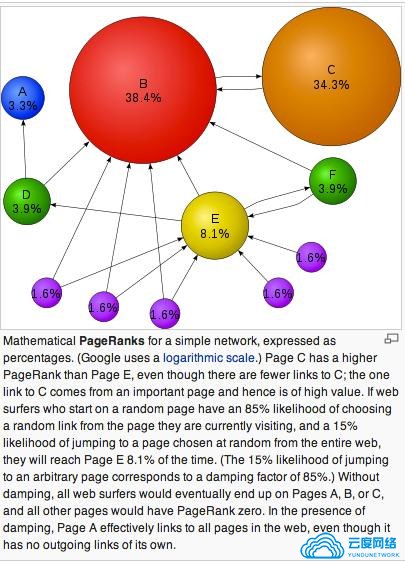
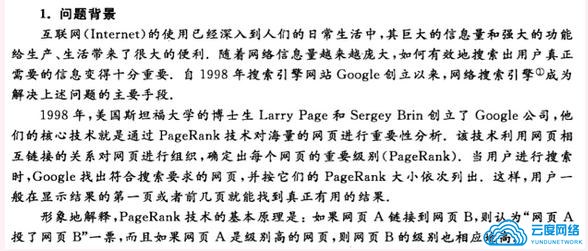
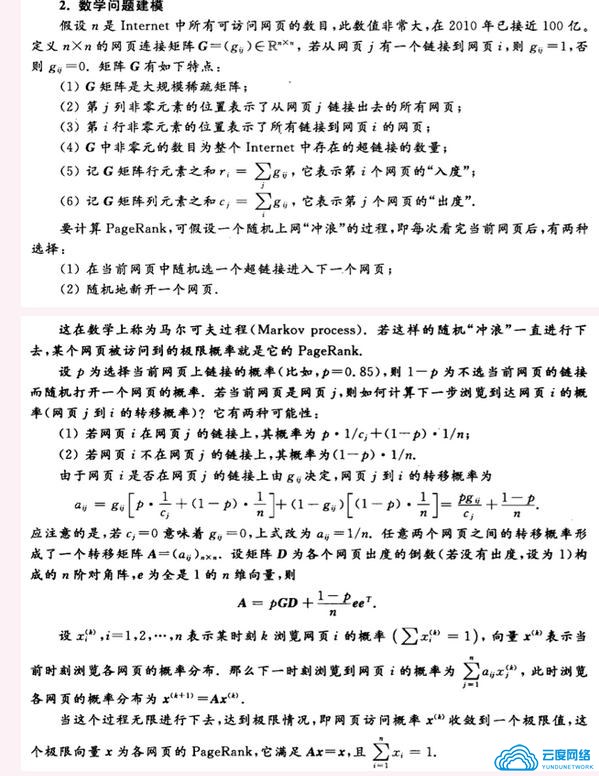
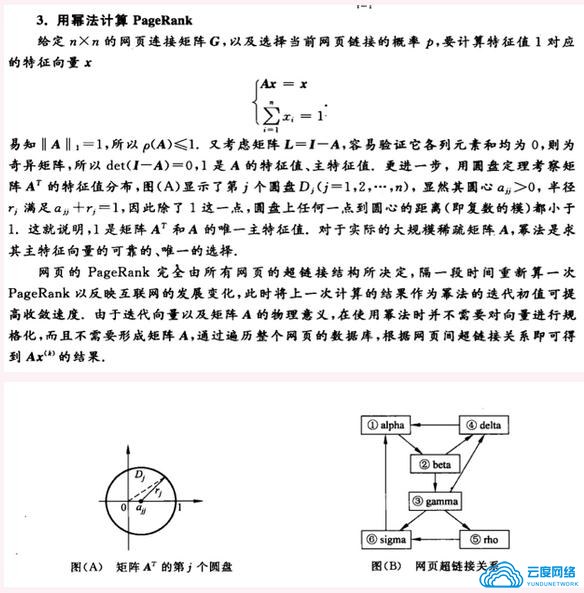
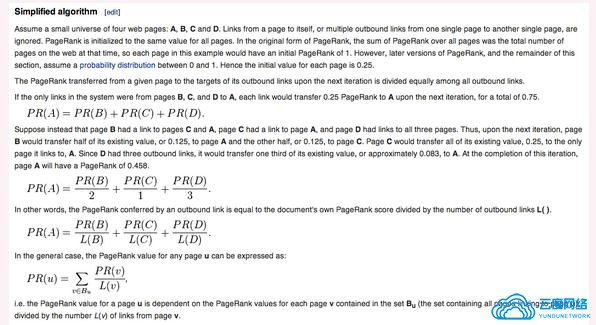
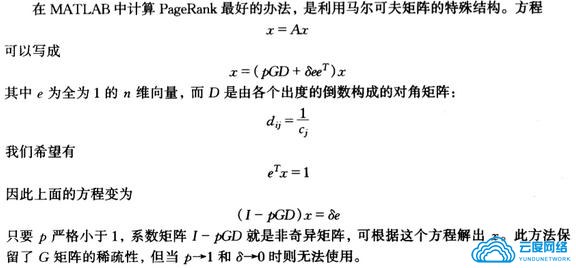
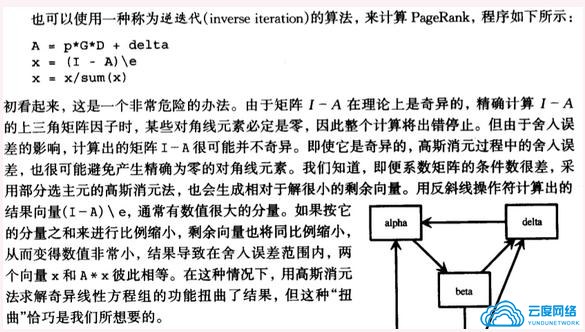

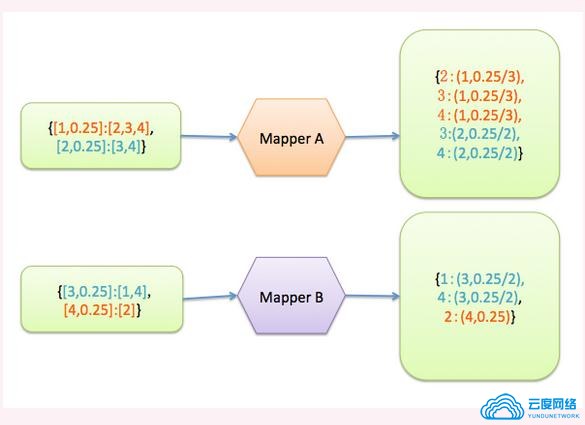

 地址:广州市天河区黄埔大道中207号伟诚商务大厦1303
地址:广州市天河区黄埔大道中207号伟诚商务大厦1303